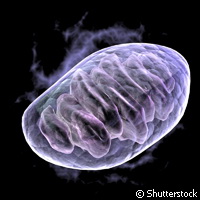Proteins essential to iron supply machinery
Iron is essential for survival but excessive amounts can be harmful and even lead to organ failure, new EU-funded research from Germany shows. Scientists from the European Molecular Biology Laboratory (EMBL) in Heidelberg have discovered that iron regulatory proteins (IRPs) are necessary for cell survival because they ensure that the right balance of iron is maintained. In particular, IRPs are instrumental in making mitochondria, the energy engine room of a cell, work properly. Results from the study are published in Cell Metabolism. EU support for the work came from the EUROIRON1 ('Genetic control of the pathogenesis of diseases based on iron accumulation') project, which received EUR 2.8 million under the Life sciences, genomics and biotechnology for health Thematic area of the Sixth Framework Programme (FP6). Mitochondria supply cells with adenosine triphosphate (the molecule that stores the energy we need), haem (a base ingredient for haemoglobin), and iron sulphur clusters (ISCs). The EMBL team found that mitochondrial iron supply and function depends on IRPs, which are cytosolic RNA (ribonucleic acid)-binding proteins that control mRNA (messenger ribonucleic acid) translation and stability. In this way, mitochondria require iron to work, but they also convert iron into other forms for the livelihood of the rest of the cell such as ISCs and haem. By using new mouse models developed for the study, the scientists determined that mice lacking both IRP1 and IRP2 in their hepatocytes (liver cells that perform several vital metabolic functions) suffered from mitochondrial iron deficiency and dysfunction, which led to liver failure and death. Co-author of the study, EMBL's Dr Bruno Galy said: 'Mice whose liver cells can't produce IRPs die of liver failure a few days after birth. The mitochondria in those cells have structural defects and don't function properly, because they don't have enough iron.' The scientists also found that when cells cannot produce IRPs, the amount of iron entering the cells drops significantly, and the systems that store and export iron within the cell go into overdrive. As a consequence of this iron shortage, mitochondria do not receive enough iron and fail to function as they should. This, in turn, results in an inability to produce enough ISCs and haem for the parts of the cell that rely on them. In their paper, the authors conclude that the results 'uncover a major role of the IRPs in cell biology: to ensure adequate iron supply to the mitochondrion for proper function of this critical organelle'. 'We have indications that this is probably a general process by which most cells control their iron content and secure mitochondrial iron sufficiency,' said EMBL team member Dr Matthias Hentze. Therefore, the process for regulating iron balance could be of particular importance to cells that rely on very high amounts of mitochondrial iron. This includes red blood cell precursors that produce haem for oxygen transport. However, there are instances in which mitochondria are not able to make use of iron, which the cell then sees as a sign of iron insufficiency and reacts by activating IRPs. This produces a harmful iron overload in mitochondria, which may explain the mechanics of diseases where cells cannot incorporate iron into haemoglobin such as inherited sideroblastic anaemias (i.e. bone marrow cannot manufacture normal red blood cells). The EMBL is now pursuing this line of research.
Countries
Germany



